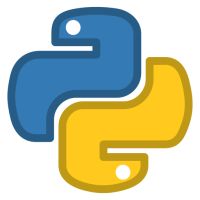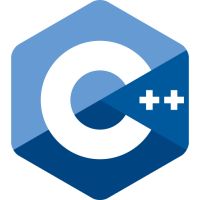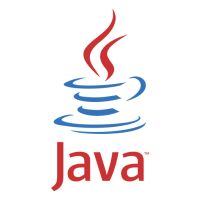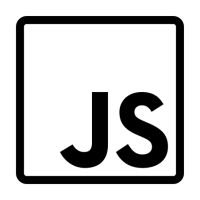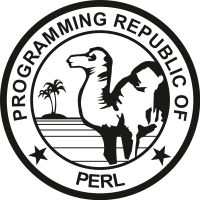Dive into the world of coding with us as we explore basic programming languages. Ideal for beginners eager to kickstart their tech journey.
More...
Coding plays an increasingly crucial role in shaping the ways we live, work, and communicate. For those looking to harness the power of technology, embark on a rewarding career, or leverage valuable skills, grasping the basic programming languages is paramount. Whether you're an aspiring developer or a lifelong learner, this guide serves as an introduction to programming tailored for beginners, providing insight into the fundamentals of coding and offering recommendations for finding the right language to suit your needs.
Key Takeaway
Understanding the Impact of Technology and Coding
As technology reshapes our day-to-day life, the competency of coding becomes more critical. Behind the seamless operations of apps and devices are intricate code structures. The aptitude for programming is identified as one of today's most valuable skill sets. With high demand for coding jobs, understanding the basics of programming and the influence of technology is crucial for junior developers and those looking to transition into tech.
The impact of technology spans across various industries and sectors, ultimately transforming how we live, work, and communicate. We rely on the advancements in technology to find solutions to complex problems, streamline efficiency and accuracy, and improve our overall quality of life.
With the importance of software development at an all-time high, acquiring coding skills will ensure that you stay relevant in a technology-driven economy. The mastery of programming languages not only opens the door to a wide range of job opportunities but also empowers you to shape the future of technological innovation.
As we witness rapid technology advancements, we come across a plethora of modern software programs designed to address specific needs, streamline processes, and provide new and improved functionalities. Thus, a thorough understanding of coding languages and frameworks is instrumental in navigating the current tech landscape.
To highlight the significance of coding and technology in various domains, consider the following domains where coding and technology have made a substantial impact:
- 1Healthcare: Improvement in patient care, medical research, telemedicine, and data analysis.
- 2Finance/fintech: Digital payments, fraud detection, financial planning, stock trading, and more.
- 3Education: Online learning, interactive educational tools, data-driven insights, and personalized learning experiences.
- 4Transportation: Autonomous vehicles, GPS navigation, ride-sharing apps, and traffic management.
- 5Entertainment: Online streaming, virtual reality, artificial intelligence-driven content creation, and game development.
Having examined the importance of coding, it is crucial to select the right programming languages and appropriate resources to acquire and hone your skills. By doing so, you'll not only gain the ability to create innovative solutions but also stand out in an increasingly competitive and technology-driven job market.
The Value of Learning to Code for Career Advancement
Learning to code goes beyond personal development; it is a strategic move towards career advancement. Acquiring coding skills boosts employability in an ever-evolving technological landscape and solidifies one's position as a sought-after candidate in numerous tech-centric roles. Let's explore the benefits of learning to code on the path to professional success.
Becoming a Marketable Candidate in Tech
By learning coding languages, individuals can ensure a competitive edge in the job market and open doors to a variety of tech careers. Some of the most in-demand roles that rely on coding skills include:
A crucial step towards becoming a marketable candidate in tech is choosing the right programming language to learn. Popular languages like JavaScript, and Python provide entry points into the coding realm.
The Economic Benefits of Coding Skills
Coding skills are a gateway to higher income brackets, with software engineers and developers typically earning competitive salaries. According to our most recent salary review, salaries for majos software development roles are as follows:
Salary for the specific IT role | Annual salary in the US (senior level) |
|---|---|
$131,000 - $195,000 | |
$109,000 - $174,000 | |
$129,000 - $200,000 |
These numbers reveal the economic advantage of acquiring coding competencies, demonstrating that a career in tech can be financially rewarding. Job security is another significant benefit as the tech industry continues to grow and demand for skilled coders rises.
Investing the time and effort to learn coding skills empowers individuals to advance in their careers, establish themselves as marketable candidates in tech, and enjoy the economic benefits associated with high-paying coding jobs. These advantages, in turn, contribute to a fulfilling and successful career journey in the technology sector.
Deciphering Programming, Scripting, and Markup Languages
Computer languages are categorized into three types: programming languages, scripting languages, and markup languages. By understanding the differences between these categories, individuals can better appreciate the distinct roles and functions of each language and make informed decisions about which to learn.
1. Programming Languages
Created with human readability in mind, programming languages enable developers to write instructions for computers that are then translated into machine code via compilers. These languages facilitate the creation of software, applications, and other digital solutions. Some popular programming languages include:
2. Scripting Languages
Scripting languages are characterized by their interpreted nature - meaning, they are processed line by line instead of being compiled. Typically used for automating tasks, scripting languages are often applied in web and application development environments. Examples of scripting languages include:
3. Markup Languages
Markup languages serve a unique purpose in the realm of coding and are dedicated to structuring and presenting content for display purposes. Unlike programming and scripting languages, markup languages lack logical processing capabilities. The two most common markup languages are:
Markup Language | Purpose |
|---|---|
HTML (Hypertext Markup Language) | Defines the structure and layout of web pages |
CSS (Cascading Style Sheets) | Styles the visual elements of web pages |
Now that the distinctions between programming, scripting, and markup languages have been clarified, individuals can make informed decisions about which languages best align with their specific interests and goals in the field of coding. By focusing on the appropriate language category, individuals can accelerate their learning journey and efficiently develop fundamental coding competencies.
Popular Programming Languages to Start Your Journey
Taking the first steps on your coding journey can feel overwhelming with a plethora of programming languages at your disposal. To ease your start, we've compiled a list of popular programming languages known for their versatility, ease of use, and potential career opportunities. With distinct use cases and levels of complexity, these languages offer excellent entry points into the realm of programming. The latest Stack Overflow Developer Survey sheds light on the top choices for beginners, which you can explore in the table below:
Language | Primary Use | Difficulty Level |
|---|---|---|
HTML/CSS | Web Development | Easy |
JavaScript | Interactive Web Applications | Intermediate |
Python | Web Development, Data Analysis, Machine Learning | Easy to Intermediate |
SQL | Database Management | Intermediate |
C++ | System Programming, Game Development | Advanced |
Java | Software Development, Mobile Applications | Intermediate to Advanced |
By understanding the primary uses, you can align your interests with the appropriate language:
- 1Web Development: HTML, CSS, and JavaScript serve as the backbone of frontend development. These languages collectively enable you to create visually engaging and interactive web applications.
- 2Data Analysis and Machine Learning: Python is a versatile language that boasts wide-ranging applications, including data analysis, machine learning, and web development. It offers a gentle learning curve for beginners, making it a popular choice.
- 3Database Management: SQL (Structured Query Language) is best suited if you are passionate about database management and the field of data science.
- 4Software and Game Development: C++ and Java are ideal for those seeking careers in software and game development, though they may present a steeper learning curve for beginners.
As you embark on your coding journey, it is vital to select the right language that aligns with your career aspirations and interests. By doing so, you will not only enjoy the learning process but also lay a strong foundation for future growth and professional opportunities in the tech industry.
The Role of HTML and CSS in Web Development
HTML and CSS serve as the foundation for creating visually compelling and easy-to-navigate websites. As markup languages, they are responsible for defining the structure and style of web pages, making them essential components in frontend development.
Creating the Visual Web: Learning HTML & CSS
For aspiring frontend developers, mastering HTML5 and CSS3 is a prerequisite. HTML (HyperText Markup Language) dictates the content hierarchy and organization of a webpage, while CSS (Cascading Style Sheets) enhances its visual presentation through attributes such as colors, fonts, layout, and responsiveness.
When learning HTML and CSS, it's helpful to understand their respective roles and how they work together:
HTML
Structures the webpage's content using elements (e.g., headings, paragraphs, lists, images) that are defined by a series of tags.
CSS
Applies styles and formatting to HTML elements, enabling design customization and responsive layouts across different devices.
Becoming proficient in HTML and CSS relies on gaining familiarity with their syntax, properties, and best practices. Some fundamental aspects include:
- 1Standard HTML structure: Doctype declaration, HTML, head, and body tags
- 2Common HTML elements: Headings (h1-h6), paragraphs (p), lists (ol, ul), and images (img)
- 3Creating well-structured, semantically meaningful markup with HTML5 elements: header, nav, main, article, aside, section, and footer
- 4Selecting and applying appropriate CSS properties: typography, colors, and layout
- 5Employing media queries to create mobile-responsive designs
To further solidify your understanding and knowledge of web design basics, it's crucial to practice building simple web pages, applying the different concepts and techniques learned. By continually refining your HTML and CSS skills, you'll be well on your way to mastering frontend development essentials.

JavaScript and its Pivotal Role in Interactive Websites
As the most commonly used programming language for a decade according to the Stack Overflow Developer Survey, JavaScript has proven to be pivotal in creating interactive and dynamic websites. This essential scripting language enriches the user experience through various dynamic behaviors, ranging from displaying live locations to intricate user interface animations. Its broad application includes both client and server-side programming, especially with Node.js for backend tasks.
1. Interactive Web Design
JavaScript enables developers to breathe life into otherwise static websites, turning them into engaging platforms that captivate and retain users. The language allows for responsive navigation, real-time updates, and seamless form handling, among other interactive elements. Additionally, popular JavaScript libraries like jQuery make it easier to implement sophisticated animation and visual effects, adding to the overall appeal of the website.
2. Client-side Scripting
As a client-side scripting language, JavaScript runs in the user's browser, reducing the workload on the server and enabling faster page loading times. With client-side logic implementation, developers can create highly responsive web applications that provide instant feedback and improved user interaction. Furthermore, JavaScript form validation ensures that user inputs are appropriately checked before submission, reducing the need for server-side validation.
3. Dynamic Web Content
JavaScript's ability to manipulate the Document Object Model (DOM) and alter elements on a webpage in response to user actions enables the creation of dynamic web content. Whether it's a live feed of user-generated content, interactive graphics, or personalized recommendations, JavaScript makes it possible to update and display new content without requiring a page refresh. This feature has a significant impact on the user experience, making websites more immersive and engaging.
Exploring Python: A Language for Beginners and Experts Alike
Python, known for its readability and beginner-friendly syntax, is a versatile server-side scripting language that caters to novices as well as seasoned experts. It supports various applications such as machine learning, data science, and backend web development, leveraging frameworks like Django and Flask. The language also plays a significant role in test automation, enabling efficient testing processes for software.
Python's Versatility: From Web Development to Data Science
Python's robust versatility can be attributed not only to its readability and ease of use but also to its broad range of applications. The language has found its place in various domains, from web development to data science, proving itself as a powerful tool in the hands of both beginners and experienced professionals. The following are some of the key areas where Python shines.
1. Web development with Python
Web development with Python is made easy when employing frameworks like Django and Flask. These frameworks simplify the process of creating secure, scalable, and high-performance web applications. With a vast library of modules to leverage, Python proves itself to be ideal for backend web development projects.
2. Python in data science
Python in data science has become increasingly popular due to its ability to process and analyze large sets of data quickly and efficiently. The language's compatibility with various libraries, such as Pandas, NumPy, and Matplotlib, allows data scientists to parse, visualize, and manipulate data seamlessly.
3. Machine learning with Python
When it comes to machine learning with Python, its gentle learning curve and wealth of libraries, such as TensorFlow, Scikit-learn, and Keras, make it a top choice for developing and implementing machine learning algorithms. Artificial intelligence researchers and engineers rely on Python for prototyping and deploying machine learning models in diverse applications.
4. Test automation using Python
Test automation using Python ensures efficient and accurate software testing processes. The language allows for seamless test case creation and execution, which enables QA teams to assess the performance and stability of software applications with precision and speed.
Application | Key Benefits | Popular Libraries/Frameworks |
|---|---|---|
Web Development | Easy-to-use frameworks, secure and scalable applications | Django, Flask |
Data Science | Efficient data processing and analysis, seamless visualization | Pandas, NumPy, Matplotlib |
Machine Learning | User-friendly language, implementation of diverse algorithms | TensorFlow, Scikit-learn, Keras |
Test Automation | Efficient testing processes, accurate results | Pytest, Selenium, Unittest |
FAQ
Why is it important to learn basic programming languages?
Learning basic programming languages is crucial for bringing ideas to life, securing lucrative career opportunities, and navigating the modern digital landscape. Coding skills are valuable and highly sought-after, with growing demand in various tech-centric roles.
Which programming languages are recommended for beginners?
For beginners, popular languages like HTML, CSS, JavaScript, Python, SQL, C++, and Java offer versatile entry points into the coding realm, catering to different interests such as web development, data analysis, and software creation.
What is the difference between programming, scripting, and markup languages?
Programming languages are designed with human readability in mind and are translated into machine code via compilers. Scripting languages are interpreted line by line rather than compiled. Markup languages, such as HTML and CSS, serve presentation purposes without logical processing, dictating the structure and style of web pages.
Why are HTML and CSS important for web development?
HTML and CSS form the foundation of web development, employing non-programming markup languages that manage the structure and style of web pages. HTML defines the content hierarchy of a webpage, while CSS enhances its visual presentation, covering aspects like colors, fonts, layout, and responsiveness.
How does JavaScript contribute to interactive and dynamic websites?
JavaScript is a scripting language used to create interactive and dynamic websites, enriching the user experience through various behaviors, such as displaying live locations and intricate user interface animations. Its applications span both client and server-side programming, particularly with Node.js for backend tasks.
What are some key applications of Python as a programming language?
Python is a versatile server-side scripting language, well-suited for beginners and seasoned experts due to its readability and beginner-friendly syntax. It supports various applications such as machine learning, data science, backend web development, and test automation through frameworks like Django and Flask.
